Cassino Memorial War Cemetery
This is the third and final post on the Liberation Tours 2016 Italian trip to the various battle sites and memorials in and around the town of Cassino. The first post described the Canadian role in the crossing of the Gari River and breaking of the Gustav Line. In the second post we visited the scenes of some of the fiercest fighting in all of WWII as the Canadians were the vanguard in breaking through the Hitler Line and opening up the road to Rome. In this post we’ll visit Cassino Memorial War Cemetery and view the butcher’s bill from the fighting in the Liri Valley. However, we are going to end our visit to the Cassino area on positive note by visiting a very unusual Italian lawyer’s office and home. I promise it will be a lot more fun than most visits to a lawyer. Won’t you join us?
Cassino Memorial War Cemetery
Just outside of the outskirts of the town of Cassino lies the Cassino Memorial War Cemetery which contains the graves of over 4,000 Commonwealth Soldiers including 855 Canadians. The brooding presence of the rebuilt Montecassino Abbey looms overhead and seems quite appropriate given the numbers who died in the effort to capture it.
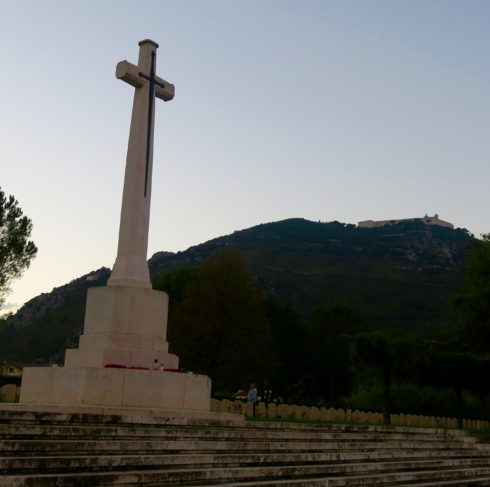
The reason the cemetery has the word ‘memorial’ in its description is that there is a memorial to the over 4,000 Commonwealth soldiers who died fighting in Italy and have no known grave. Imagine that – 4,000 people just disappeared, many simply blown to smithereens or buried in rubble, never to be seen again. Imagine too the pain of parents, siblings, wives and children of never knowing what happened to their loved one. I really can’t.
This is the Monument to the Missing at Cassino. The 4,000 plus names are inscribed on those stone slabs.
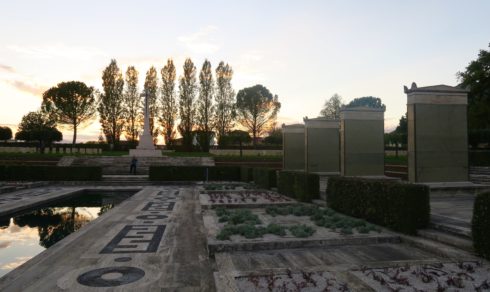
And the Stone of Remembrance. One can only hope that the inscription is at least figuratively true.
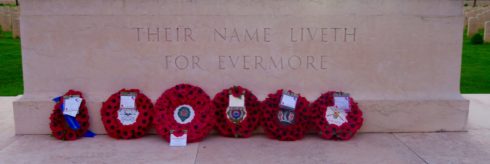
I don’t have a specific plan for visiting individual graves, so I’m just going to wander and look for fellow Nova Scotians and other graves of interest. This is in contrast to the Allisons from New Brunswick who have done their homework and have specific graves of Carleton and York Regiment members that they intend to visit and honour.
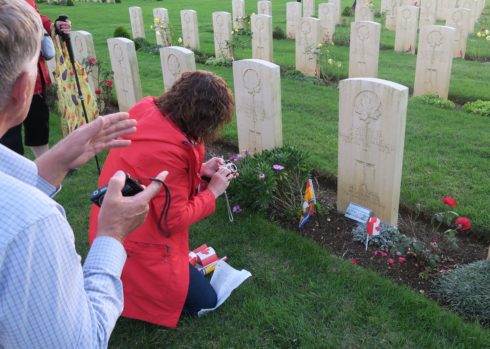
Here are a few of the 4,000 buried at Cassino.
The first is Private Joseph Anthony Gallant, son of Archie and Julia Gallant of Richmond, P.E.I.
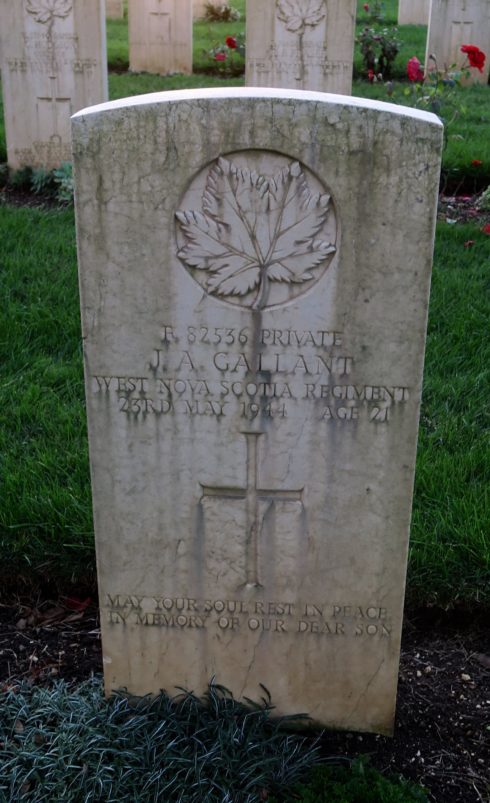
If there ever was a typical P.E.I. Acadian name it is Gallant and I was not surprised when I looked him up to find he was not a Nova Scotian, but an Islander.
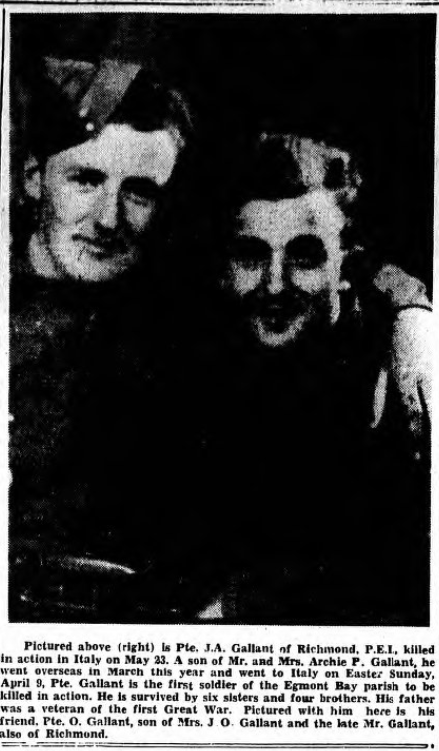
Private Gallant was killed on that most horrible of days for Canada in Italy – May 23, 1944; one of 323 Canadians to die on that date.
Private Gallant had only been in Italy since March, 1944 and undoubtedly was one of the West Nova replacements sent over after the Battle of Ortona took its bloody toll on many of the regiments that had been in Italy since day one.
This is another Maritimer killed on May 23, 1944. He is Private Samuel Howard Dow, son of Robert and Rosina Dow of Canterbury, New Brunswick. That is the same small town as Alison’s father grew up in and without doubt he would have known Private Dow.
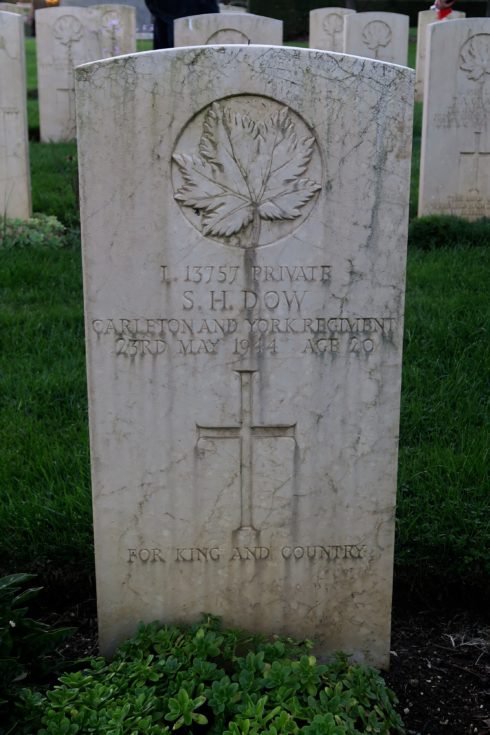
To show that May 23, 1944 was an equal opportunity killer of Maritimers, this is Private Ancel Cleland Smith son of Joel and Christina Hennigar from Kennetcook, Hants County, Nova Scotia. He quit school at age 16 to become a lumberman, like many in rural Nova Scotia and aspired to be a mechanic on his discharge. That never happened. He was only with the West Novas just over a week when he was killed.
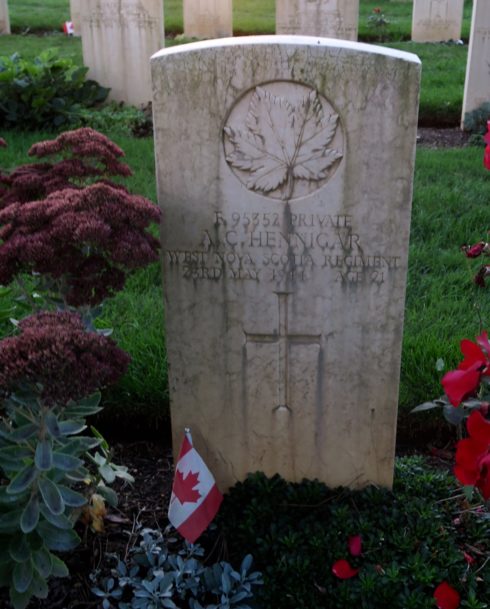
Canadian military historian Mark Zuehlke, who has been accompanying us on this trip, has written extensively about the Italian campaign including his excellent Liri Valley: Canada’s WWII Breakthrough to Rome. In that book he recalls the fears and reservations that the veteran troops had about the ability of the replacements they were receiving in the days leading up the the Liri Valley campaign. I suspect these three young men above might fall into that category. That doesn’t make their untimely deaths any less important or heartbreaking.
Here is the grave of Sgt. William Steadman Jodrey, son of Mr. and Mrs. Spurgeon Jodrey of New Glasgow, Nova Scotia and husband of Thelma Jodrey. He was one of the vets who had been with the West Novas since 1939 and had fought his way up from Sicily and survived many battles. However, his experience could not stop the artillery shell that killed him on May 23, 1944.
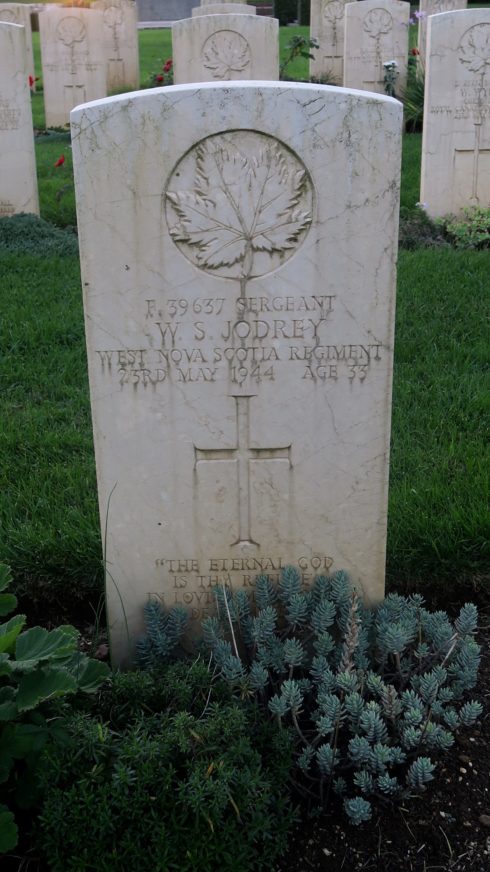
That’s about all the May 23 carnage I can bear so I look around for non-Canadian graves and come across New Zealand Sapper Kootu Wehipeihana, son of Riuhi and Iriaka Wehipeihana of Ohau, Wellington city. I am always glad to come across a grave that has a photo attached because it usually means that some relative or friend has been to visit the grave.
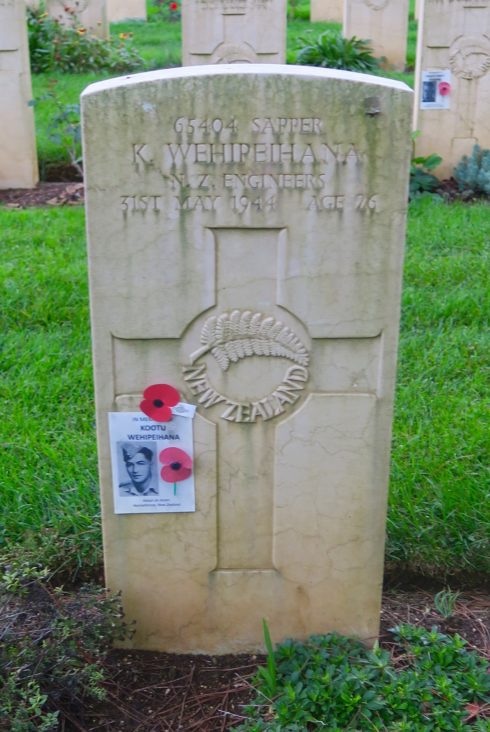
He was a good looking young man of obvious Maori descent, one of many thousands of aboriginal people from around the world who answered the call to fight in Europe despite having no connection with the people of that continent.
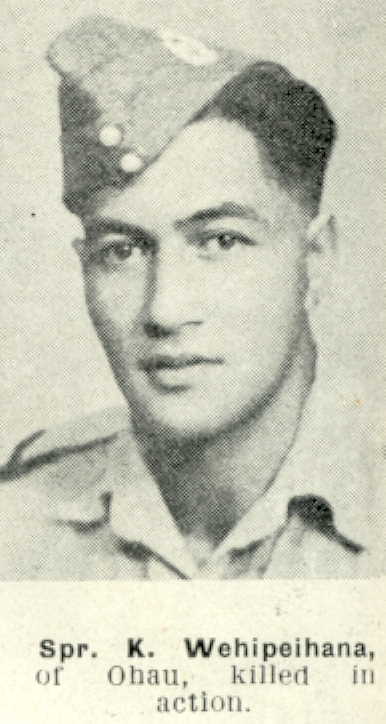
It’s time now to board the bus and put the sacrifice and suffering of the Liri Valley behind us and look at life in Cassino as it’s lived today. To that end we are headed to the home and law office of Roberto Molle who is one Italian that is determined not to forget the role that Canadians played in making sure he and his family could prosper in post WWII Italy. He has a nice brass plaque marking the entrance to his home which also doubles as his law office and war museum – yes you read that right, war museum.
At Roberto Molle’s
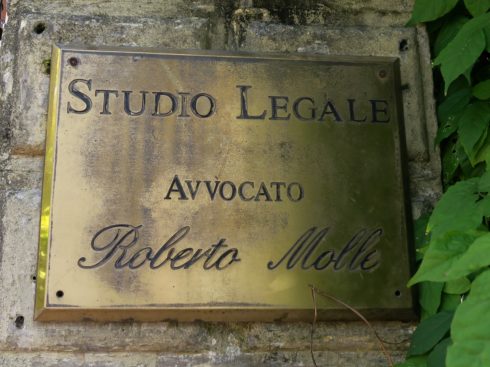
Roberto has a spread laid out for us outside under an awning and invites us to dig in.
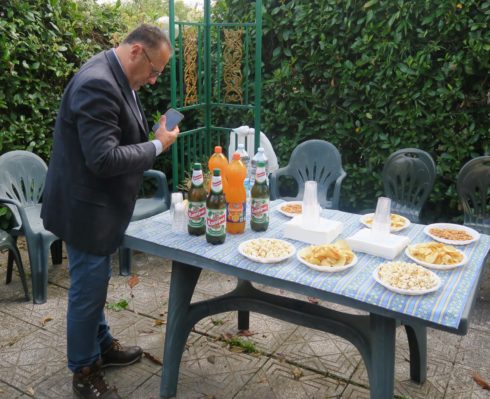
I’m intrigued by his beer selection – Kumpel Premium Lager from Poland, which I haven’t tried before, but first Roberto takes us on a tour of his war museum. He has amassed this collection of WWII artifacts simply by scrounging and buying at flea markets and antique shops. World War memorabilia is a really big deal in France and Belgium and people pay big bucks for prized weaponry, uniforms and other war related items. Not so in Italy, where it seems most Italians would just as soon forget the war, but not Roberto. Here’s a look at just a few of the things in his collection.
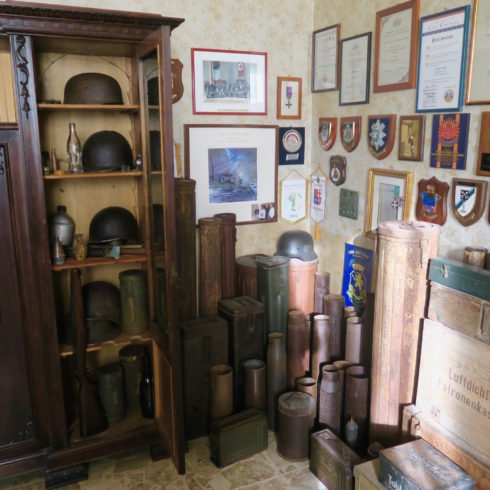
Bren gun, anyone?
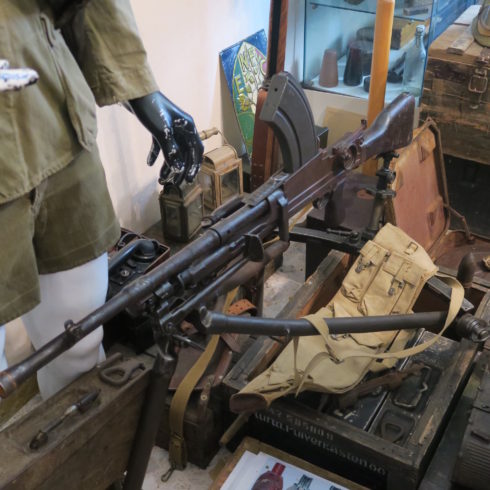
How about a few PIAT shells?
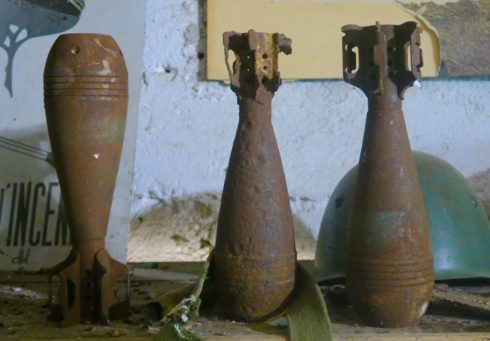
My personal favourite was this mortar which is right beside Roberto’s desk in his law office. How often would I like to have such an instrument of persuasion in dealing with an obstreperous client.
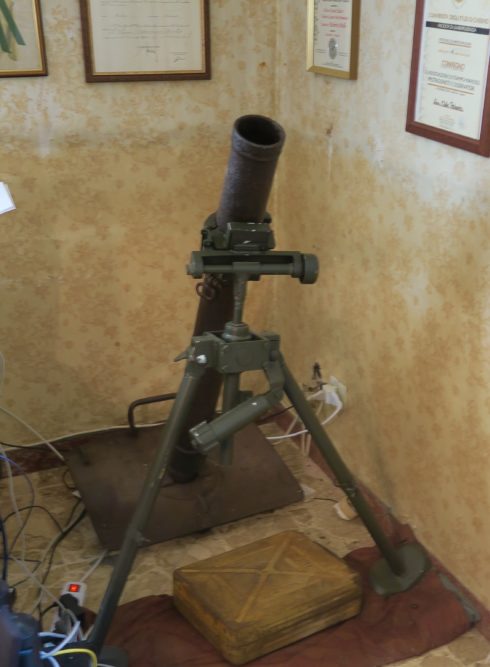
Most people are familiar with the Shakespeare line, “The first thing we do, let’s kill all the lawyers”, although I doubt many know that is was spoken by a character called Dick the Butcher who craved anarchy. The reality is that lawyers don’t create the trouble, it’s the clients who bring their troubles to us. Perhaps if a certain Mr. Schicklgruber had been killed, then there wouldn’t have been the need to collect these war relics. Right Roberto? Right, Dale.
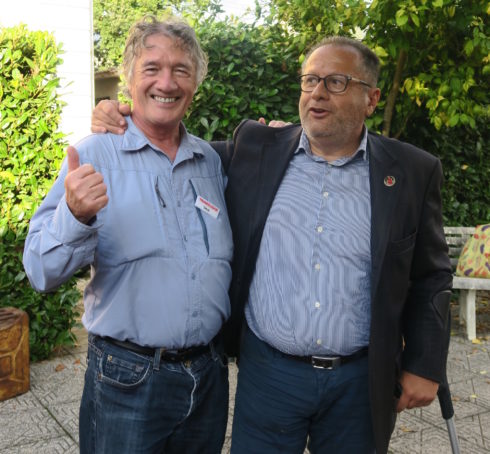
Time now to sample the Kumpel lager, which is fine, but not as good as Peroni or Moretti. While we all dig into the food, Roberto introduces Ben Malnati who was nine years old when the Canadians liberated his village. Through broken English he explains how he was literally starving to death when the Canadians offered him food, shelter and clothing and he has never forgotten their kindness. Here is Ben singing that all time Italian classic Mamma, and although it doesn’t compare to versions you can find on YouTube by Pavarotti or Andrea Bocelli, it was a sweet gesture and a touching moment. Enjoy.
It was time for our third group picture of what was a very busy day. Here we are with our hosts Roberto Molle, his family, Ben Malnati and Alessandro Campagna.
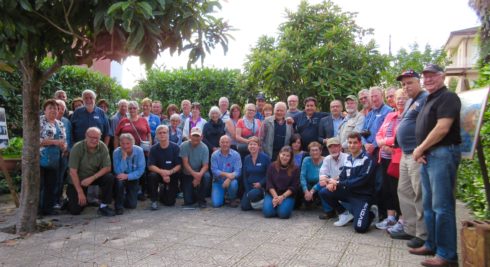
Time to board the bus for a final time and say goodbye to our friends, including one reluctant dog, from the Liri Valley.
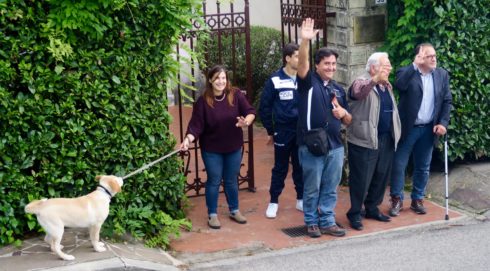
Thanks Liberation Tours for a most memorable day. Please join us a we take a break from war related sites and spend some time in the great city of Florence.

